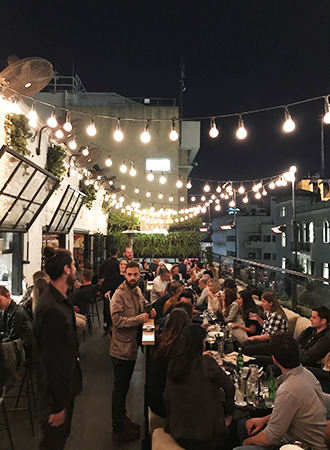The vibrant and unforgettable Tel Aviv
Tel Aviv is one of the most vibrant, cosmopolitan and beautiful cities I have ever visited. Ask anyone who has ever gone there: in Tel Aviv you can see one of the most unforgettable sunsets, thanks to its privileged coastal location. It is hot almost all year round, thus the beach is one of the city’s main attractions, besides being clean and beautiful. During the winter, the temperature drops a little and it is very pleasant, but the days remain mainly sunny.

Lifestyle: Those who enjoy the more urban and busy side will love, for example, the many options of cafes, bars, clubs, rooftops, wide avenues and streets where young people literally occupy them day, night and late hours. The traffic may be a bit chaotic (Israelis love honking, it is not easy to drive there), but its easy to walk or ride a bicycle, especially the electric ones that have gone viral in recent years. Avoid taxis unless you are leaving or arriving at the airport, or negotiate the price before... you never know what they will want to charge.
Beaches: During the summer, Tel Aviv offers a huge variety of beaches: from the most family type beach to the trendiest. I love two of them: Brogashov, very central with family-friendly kiosk and bar options, but it’s not square - and for a bit more of excitement, Hilton Beach is where you want to be (and get ready to spend a lot, prices are very high). Hilton is even where you see more groups of friends and gay couples and a lot of beautiful people.

Where to sleep: those who love small hotels with warm service can choose the White Villa, centrally located, elegant and low key, just steps from the famous Rotschild Boulevard; or Market House, which is in Yaffo's old harbor district, a few steps from the beach and the street bustle surrounding the local flea market. Both are very cool, with intimate and unpretentious service and serve unforgettable breakfasts. But if the intention is to stay at “a place to see and be seen”, stay at The Norman, the largest in terms of structure, grandeur and variety, beautiful architecture, with several restaurants (wonderful food), rooftop pool, gym, lobby bar, lounges and gardens ... No wonder it is always full.
Markets: Street food and its colors and aromas tell a lot about local culture and customs. That's why I always start my journey in food markets when I’m in an unfamiliar city or country. In Tel Aviv there are three must see markets: Carmel, more touristy and beautiful to look at and buy, Levinsky Market, less pop and frequented by locals, and Sarona Market that follows the trend of food courts, like Chelsea Market in NY, Borough Market in London, Food Hallen in Amsterdam.



Where to go: Most historic neighborhoods have a lot of charm and enchant us, making us imagine what might have happened there. To begin to understand the formation of Tel Aviv, I recommend staying or at least exploring for more than 1 day the port district of Yaffo. The beige tones of the old buildings form a palette that soothes the look and integrate with the colors of the flowers, a shocking pink that mesmerizes. You have an almost bucolic feeling when you walk there. There are many ruins - all are beautiful - a famous flea market that runs almost every day, wonderful restaurants and cafes, many Arab families whose ancestors settled centuries ago when they arrived in the city, besides being a neighborhood just steps from the beach.
On the opposite side of town, Rotschild is a boulevard that represents much of what the local young people's lifestyle is - trendy, cool, up-to-date, open minded - in part because of what it historically represented. There is an episode called "Israeli Spring", a social act that used this street as a stage for protests by young people who took the avenue for 3 months, huddled and living in tents scattered along the long avenue, claiming for better wages and lower fees. This happened about 04 years ago and meant a very strong general strike for the city. It is a flirting meeting place or to meet friends; for retired seniors to play bocce ball; to walk dogs; a passage for those coming or going. And you walk there on foot, by bicycle, and on skates. Not far away is the hyper-cool and dynamic Neve Tzedek neighborhood, the first Jewish quarter built outside the port of Yaffo. Inhabited from its very core by artists, writers and intellectuals. It was built with houses and small buildings, preserving the Art Nouveau architecture and then the Bauhaus. Over the years, it has become highly valued and today it is one of the most expensive places to live in. There you will find fashion shops, bars, restaurants, cafes and one of the main symbols of its history, the famous Suzanne Dellal theater, home of the unique Batsheva ballet. Museums and galleries are also easy to find throughout most of the city.
How long to stay: Tel Aviv will surely please any type of traveler. Stay at least 5 days, but 1 week to 10 days is ideal to enjoy all it offers.
In time: as any capital of the world, prices tend to be quite expensive for food, lodging and shopping.





